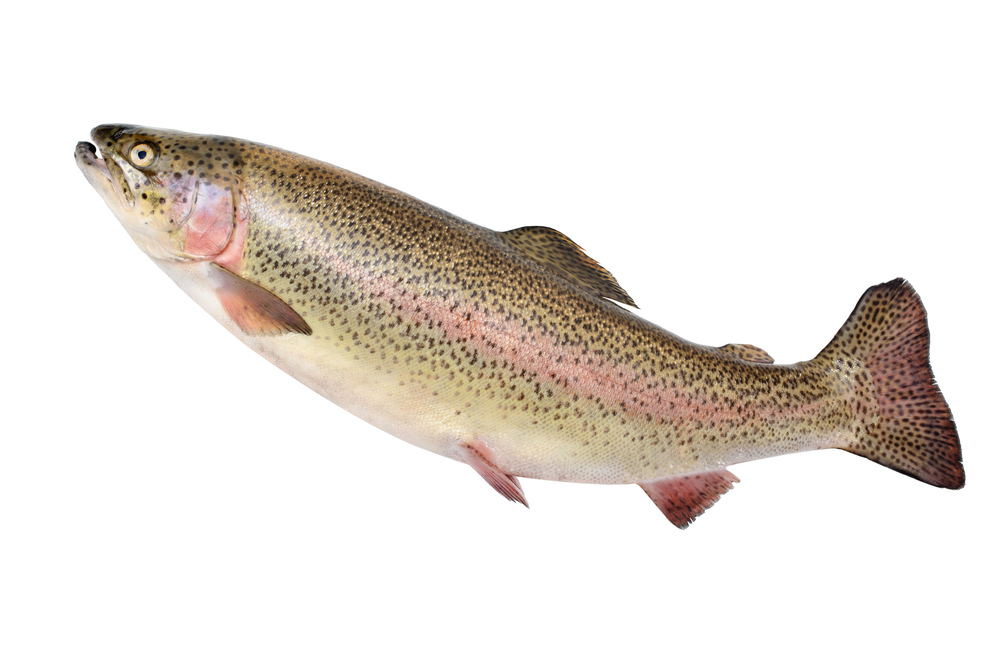When people talk about trout fishing (particularly the novice), visions of the rainbow are evoked. The rainbow has been described as the “true American trout” because of it’s origins in the Pacific Northwest. This brings argument from scientific types who study such stuff, but most of us don’t care about things like that. Most of us think excitement when we think rainbow.
The rainbow has spunk. They don’t stay with the stream bottom like brown trout, or hide in quiet backwaters like the brook. Rainbows are to be found in the open, faster waters, where they tend to feed at the surface more often than other trout. They are open, up front and honest, and for that reason we think more respectfully of them, and they are usually the most fun.
While the North American rainbow trout is native to westward flowing Pacific Coast rivers, they have been introduced to many streams worldwide. Rainbows are the most easily cultured and adaptive of all trout and are thus included in most stocking programs. Rainbows had been introduced in forty-one states by 1900.
Rainbow Trout Markings and Coloration
Stream-living rainbows are easy to identify. Their upper bodies are heavily covered with black spots, a pattern that extends over the tail. Their backs range from light to dark olive, the abdomen is white and there’s a characteristic reddish pink band along the lateral line, a color that usually extends forward over the central portion of the fish’s gill covers. There are no red or yellow spots.
As mentioned earlier, rainbows are the most adaptable of all trout and can tolerate a wider range of temperature and conditions than other trout. Rainbows can survive temperatures approaching 32 degrees Fahrenheit and some can survive in water as high as 83 degrees, though they prefer a range of 55 to 70 degrees.
Rainbow Range and Habitat
The feeding habits of rainbows is generally similar to that described for brown trout. They are usually drift feeders–holding stationary positions in the current, usually in relation to a rock or other current-breaking object.
Rainbows usually pre-fer faster water than other trout, and there is some research data indicating that they will hold feeding positions in slightly faster water than that used by brown trout. Rainbows also often hold themselves higher in the water column than brown trout, which usually orient themselves close to a rock or other bottom object.
Rainbows apparently find the same sort of security under a choppy, broken surface that a brown trout finds by hiding under a stump. Rainbows are much less oriented to physical, overhead cover than browns. When hooked, larger rainbows don’t usually run for over-head cover as larger browns do, but rather just run and run and run in their attempt to evade the difficulty of being hooked. These trout are also almost unique among trout in usually jumping one or more times when hooked, a characteristic that seems to be just as prevalent among large rainbows as among small ones.
Rainbow Size
As with other trout, growth rates in rainbows are variable, depending on habitat and available food supply. For example, one-year-old rainbows will average 4 or 5 inches long; at two years approximately 6 or 7, and 9 inches long at three years. The maximum age reached by most rainbows is about seven years and, if they drift-feed, can weigh 8 pounds or more.
Smart Fish
The demonstrated ability of rainbow and other trout to learn, remember, and to act as individuals different from the norm is central to the whole sport of fly fishing for trout. These abilities have much to do with why trout are selective in the first place and why, as a result, there is no one trout fly that works for all of the trout all of the time.
Restoration
The restoration efforts of Park resource managers have led them to closing some streams and tributaries to all fishing, and ensuring natural barriers such as waterfalls are adequate to prevent the brown and rainbow trout from migrating upstream.

